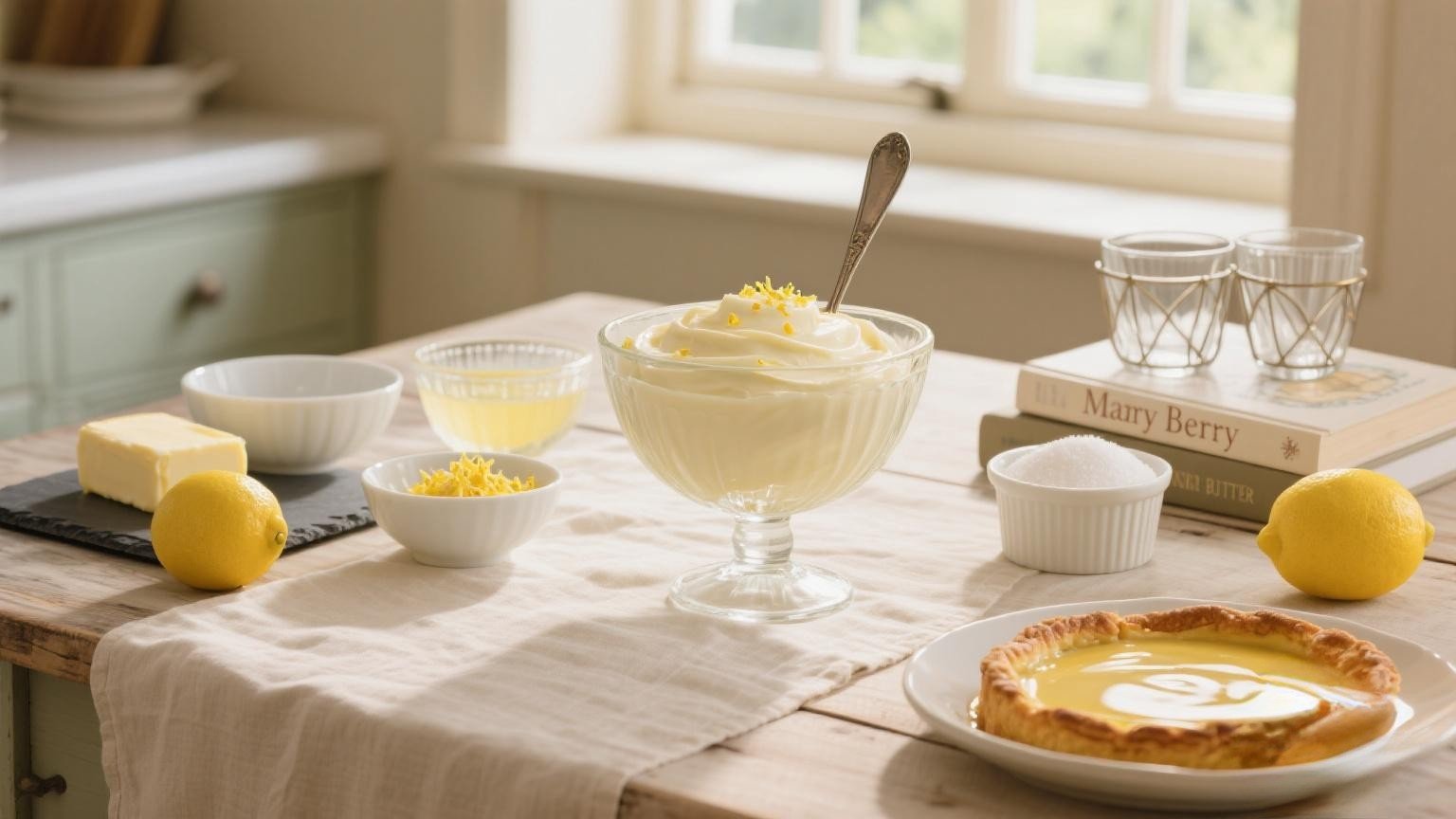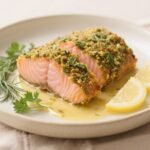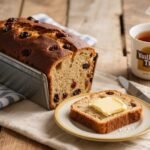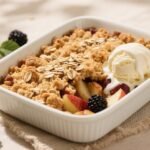There is a name in British baking that whispers of perfection, warmth, and foolproof recipes: Mary Berry. As the nation’s treasured baker and author of over 70 books, her influence stretches over four decades, teaching generations to cook with confidence. From her time as the beloved judge on The Great British Bake Off to her Cordon Bleu training in Paris, Mary’s philosophy is built on quality ingredients, clear methods, and utterly delicious results. Her Lemon Buttercream Icing is a perfect example of this—a simple yet transformative recipe that turns a good cake into a showstopper.
Mary Berry’s Philosophy and the History of Buttercream
Mary Berry’s approach is defined by an unwavering commitment to quality. For her, the best results start with the best ingredients: rich, creamy butter and fresh, zesty lemons. There are no shortcuts. This dedication stems from her classic French training at Le Cordon Bleu in Paris, where precision and technique are paramount.
Buttercream itself has a rich history. The earliest versions, known as crème au beurre, emerged in France during the 19th century. The simplest form, buttercreme meringue, involved whipping egg whites and sugar into a meringue before incorporating generous amounts of softened butter. This method is still a favourite for professionals for its stability and silky texture.
Mary Berry’s recipe for lemon buttercream uses a simpler “ermine” or “crusting” buttercream method, which is incredibly forgiving and stable. It involves beating softened butter into sifted icing sugar. This style became hugely popular in British and American home baking throughout the 20th century because it requires no eggs, no cooking, and is quick to make. Mary’s personal touch is the generous use of fresh lemon zest and juice, which cuts through the sweetness and adds a vibrant, sunny flavour that is instantly recognisable. She stays true to the tradition of simple, effective baking while elevating it with bold, fresh flavours.
Notices on Ingredients & Equipment
Using high-quality ingredients is non-negotiable for a frosting that tastes exceptional.
Ingredients List:
- Unsalted Butter: 225g (1 cup), at room temperature. Use a good-quality butter like Kerrygold or President for the best flavour. It must be soft to the touch but not oily.
- Icing Sugar: 450g (approx. 3¾ cups), sifted. Sifting is crucial to avoid lumps.
- Lemons: 2 large, unwaxed lemons. You will need the finely grated zest of both and 2-3 tablespoons of the fresh juice.
- Pinch of Fine Sea Salt: To balance the sweetness.
Necessary Kitchen Equipment:
- Electric Hand Mixer or Stand Mixer (with paddle attachment)
- Large Mixing Bowl
- Microplane or Fine Zester
- Juicer or Fork
- Sieve (for sifting icing sugar)
- Spatula
- Measuring Spoons and Scales
Recipe Instructions
Important: This recipe makes enough to fill and cover an 8-inch, two-layer cake.
Step 1: Prepare the Lemons
Wash and dry the lemons thoroughly. Using a fine zester, gently grate the yellow zest from both lemons, avoiding the bitter white pith underneath. Cut the lemons in half and juice them, straining the juice to remove any pips or pulp. Set aside.

Step 2: Soften the Butter
Ensure your butter is perfectly softened. It should yield easily when pressed with a finger but still hold its shape. Place the 225g of softened unsalted butter in a large mixing bowl.
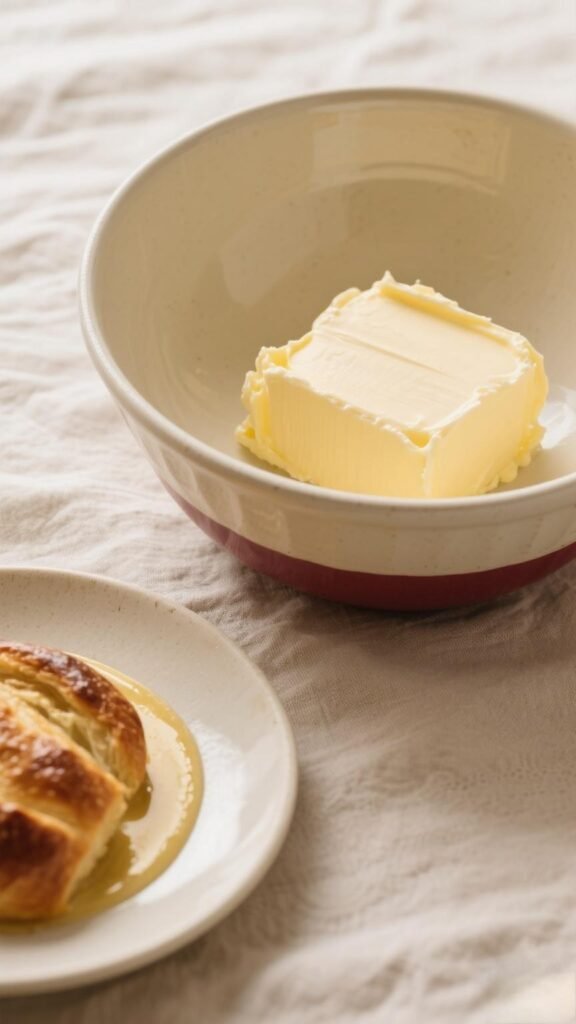
Step 3: Begin Beating
Using an electric hand mixer or a stand mixer on medium speed, beat the butter for about 1-2 minutes until it becomes very pale, smooth, and creamy.
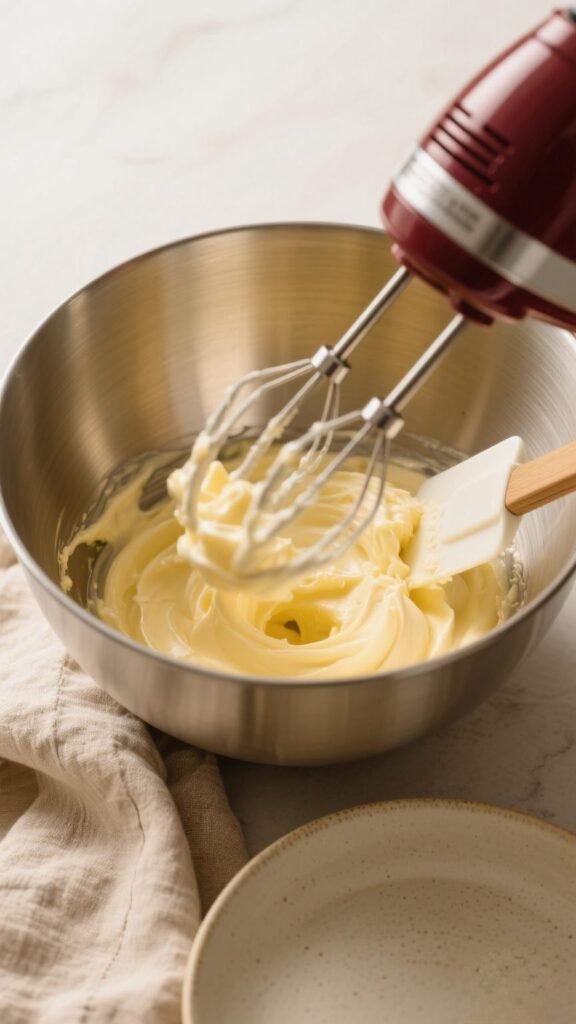
Step 4: Incorporate the Sugar Gradually
Add the sifted icing sugar one large spoonful at a time, beating on low speed initially to avoid a sugar cloud. Once all the sugar is incorporated, add the pinch of salt. Increase the speed to high and beat for a full 5-7 minutes. The mixture will become extremely light, fluffy, and almost white.
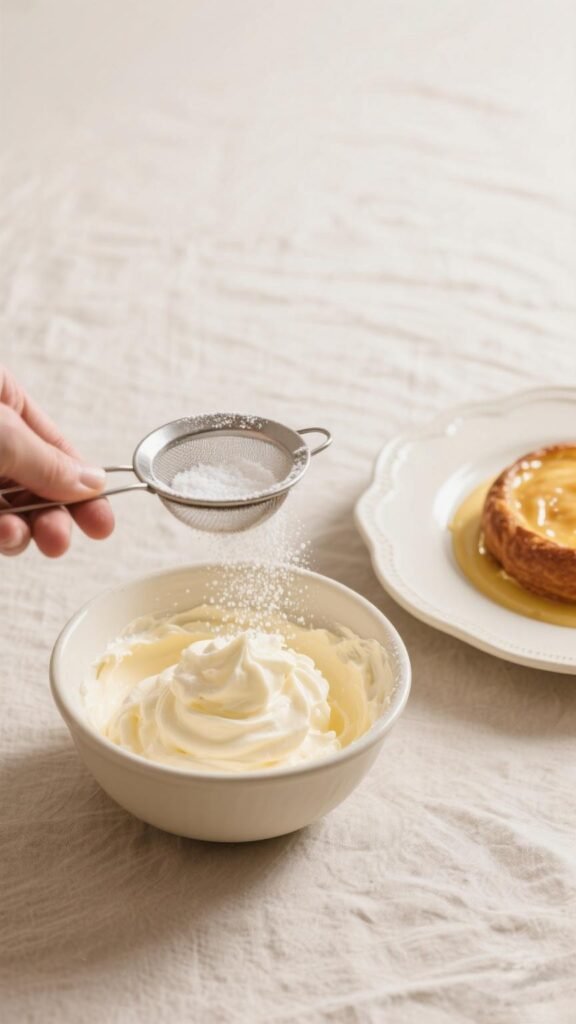
Step 5: Add the Lemon Flavour
Reduce the mixer speed to low. After this, Add the fresh lemon zest and 2 tablespoons of the lemon juice. Mix until just combined. Increase the speed to high again for one final minute of beating. Check the consistency. If you prefer a tarter or slightly softer icing, add the remaining tablespoon of juice.
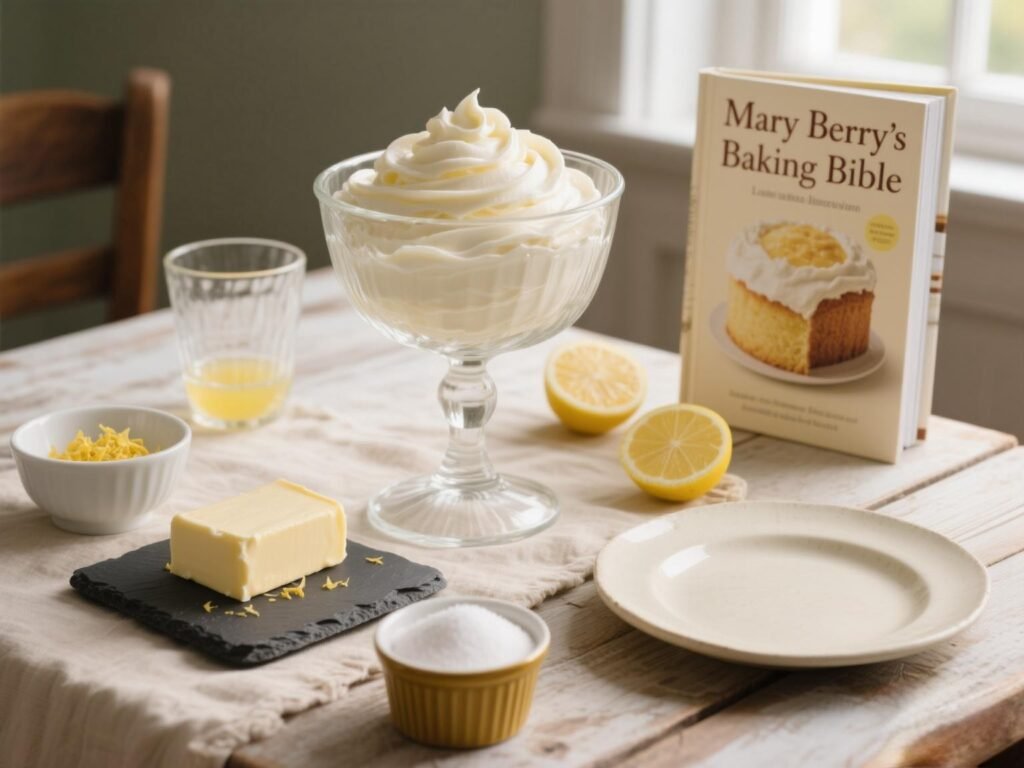
Your lemon buttercream is now ready to use. It should be smooth, spreadable, and full of air.
Flavor Profile & Nutritional Information
Flavor Profile: This icing is a perfect balance of rich, creamy sweetness from the butter and sugar and a sharp, vibrant zing from the fresh lemons. The texture is incredibly light and smooth, making it the perfect partner for vanilla, almond, or coconut cakes.
Nutritional Information (Estimated per 1/12th of the recipe):
- Calories: ~280 kcal
- Fat: ~15g
- Saturated Fat: ~10g
- Carbohydrates: ~38g
- Sugars: ~38g
- Protein: ~0.2g
Tips for a Perfect Lemon Buttercream
- Troubleshooting Grainy Icing: This is caused by undissolved sugar. Always sift your icing sugar and beat the butter and sugar for the full 5-7 minutes until the granules have completely dissolved.
- Troubleshooting Runny Icing: If your icing is too soft to pipe, it’s likely because the butter was too warm or too much liquid was added. Place the entire bowl in the refrigerator for 15-20 minutes to firm up, then re-beat.
- Troubleshooting Curdled Icing: If the mixture looks split or curdled, the butter was probably too cold. Place the bowl over a very low heat source (like a warm water bath) for a few seconds while beating to gently warm the outside of the bowl. This will usually bring it back together.
- Enhancing Flavour: For an even more intense lemon flavour, add a drop of pure lemon oil (not extract) along with the juice.
Vegan Adaptation
This recipe is easily adapted to be vegan and dairy-free without compromising on taste or texture.
Ingredients:
- 225g high-quality vegan block butter (e.g., Naturli Vegan Block or Flora Plant Butter), at room temperature.
- 450g icing sugar, sifted.
- Zest and juice of 2 lemons.
Instructions:
Follow the exact same method as above. The result is a beautifully creamy, vegan-friendly lemon buttercream that pipes and spreads perfectly.
Recipe Variations & Serving Suggestions
- Lemon Curd Buttercream: Fold in 3-4 tablespoons of good-quality lemon curd at the end for a double-lemon burst.
- Herb-Infused: Add a tablespoon of very finely chopped lemon thyme or basil for a sophisticated twist.
- Yuzu Buttercream: Substitute the lemon juice and zest for yuzu juice for a trendy, complex citrus flavour.
This icing is classic on a Victoria Sponge or a Lemon Drizzle Cake. It also pipes beautifully onto cupcakes and is sturdy enough for a layered birthday cake.
Storage & Reheating Instructions
- Storage: Keep buttercream in an airtight container in the refrigerator for up to one week.
- Reheating: Before using chilled buttercream, allow it to come to room temperature for 1-2 hours. Re-beat it with an electric mixer for a minute to restore its fluffy texture. Do not microwave.
Frequently Asked Questions (FAQ)
Q: Can I use margarine instead of butter?
A: Mary Berry would not recommend it. Butter provides the best flavour and structure. For a dairy-free version, use a dedicated vegan block butter designed for baking.
Q: Why is my buttercream yellow?
A: This is natural! The butter and lemon zest will give it a lovely pale yellow colour. If you want it brighter, a tiny drop of yellow gel food colouring can be used.
Q: Can I freeze lemon buttercream?
A: Yes. Place it in a freezer-safe container for up to 3 months. Thaw overnight in the refrigerator and bring to room temperature before re-beating.
Conclusion & Call to Action
Mary Berry’s Lemon Buttercream Icing is more than a recipe; it’s a masterclass in balancing flavour and texture. It’s a timeless, versatile frosting that promises to elevate your baking.
We encourage you to try this recipe. Take your time, use the best ingredients you can find, and enjoy the process. Share your beautiful creations with us on social media by tagging #MaryBerryLemonIcing. We love to see your bakes!
For more classic baking inspiration, explore our take on Mary Berry’s Victoria Sponge.
Additional Resources
Explore Mary Berry’s entire collection of cookbooks and find your next baking project: Official Mary Berry Cookbooks



